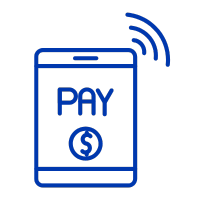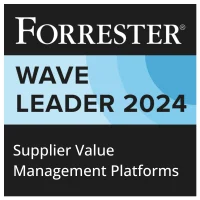Accounts Payable (AP) Automation is the use of technology to streamline and automate the processes associated with an organization’s accounts payable functions. This includes tasks such as invoice processing, approval workflows, and payment disbursements, reducing manual intervention and increasing efficiency. With AP automation, businesses can improve accuracy, accelerate processing times, and gain greater control over financial operations, ultimately providing better visibility into cash flow and financial data.
Key Benefits
-Increased Efficiency: AP Automation significantly reduces manual processing time by streamlining tasks such as invoice processing and approvals. This enables a faster turnaround and allows finance teams to focus on more strategic activities.
-Error Reduction: By automating the accounts payable process, the likelihood of human errors such as duplicate payments and invoice mismatches is substantially decreased. Automation ensures accuracy in data entry and consistency throughout the payment process.
-Cost Savings: Automation leads to significant cost reduction by minimizing paper-based processes, reducing the need for physical storage, and decreasing labor costs associated with manual handling of invoices.
-Enhanced Compliance and Security: AP Automation strengthens compliance by ensuring that all transactions adhere to internal policies and regulatory requirements. It also enhances security by providing robust audit trails and reducing the risk of fraud.
-Improved Supplier Relationships: By providing timely and accurate payments, AP Automation helps maintain healthy supplier relationships. Suppliers appreciate the predictability and efficiency, which can lead to more favorable terms and better negotiation conditions.
Related Terms
-Increased Efficiency: AP Automation significantly reduces manual processing time by streamlining tasks such as invoice processing and approvals. This enables a faster turnaround and allows finance teams to focus on more strategic activities.
-Error Reduction: By automating the accounts payable process, the likelihood of human errors such as duplicate payments and invoice mismatches is substantially decreased. Automation ensures accuracy in data entry and consistency throughout the payment process.
-Cost Savings: Automation leads to significant cost reduction by minimizing paper-based processes, reducing the need for physical storage, and decreasing labor costs associated with manual handling of invoices.
-Enhanced Compliance and Security: AP Automation strengthens compliance by ensuring that all transactions adhere to internal policies and regulatory requirements. It also enhances security by providing robust audit trails and reducing the risk of fraud.
-Improved Supplier Relationships: By providing timely and accurate payments, AP Automation helps maintain healthy supplier relationships. Suppliers appreciate the predictability and efficiency, which can lead to more favorable terms and better negotiation conditions.
References
Here are 3 Zycus resources related to Accounts Payable (AP) Automation:
White Papers
Master the UK Procurement Act 2023: Ensure Compliance & Drive Procurement Excellence

Filter by
Compliant Invoicing
Compliant Invoicing refers to the process of generating, submitting, and managing invoices in adherence with legal, regulatory, and contractual requirements.
Continuity Plan
A Continuity Plan is an organized set of policies and procedures designed to ensure that a company’s essential operations can
Cost Modeling
Cost Modeling in procurement refers to the analysis and estimation of the total cost of ownership of a product or
Contract Audit
Contract Audit is a systematic evaluation of agreements and related documentation to ensure compliance with contractual terms, identify discrepancies, and
Procurement Cycle
The Procurement Cycle refers to the end-to-end process through which an organization identifies its needs, sources suppliers, negotiates contracts, places
Procurement Master Data Management
Procurement Master Data Management is the disciplined approach to managing core, consistent procurement information, including supplier, product, and contract data,






















































